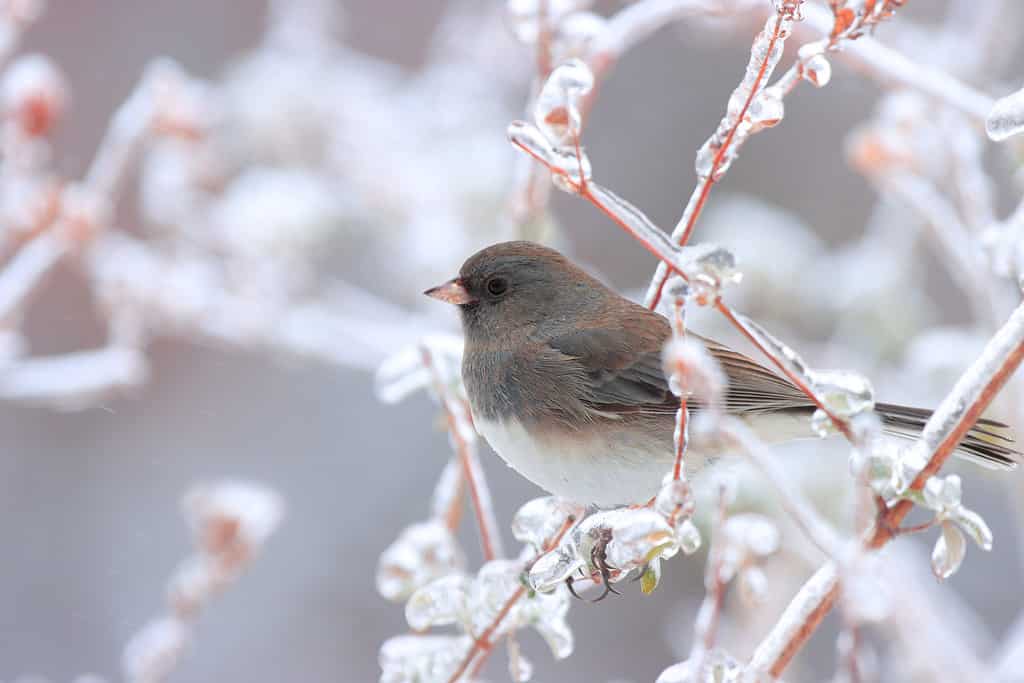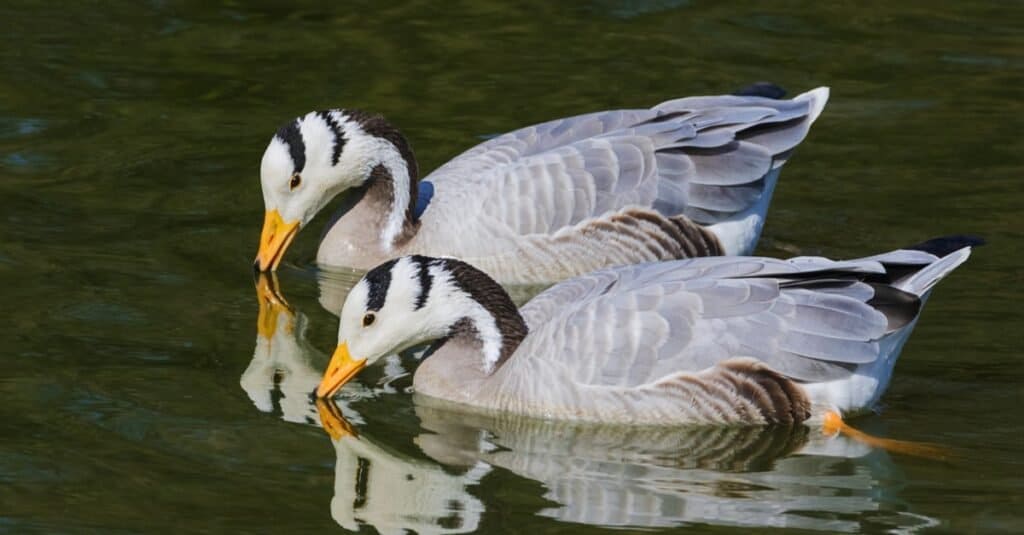Have you ever wondered how birds survive extreme environments? If so, you’re not alone. From the hottest places on Earth to the coldest, birds are highly diverse. Each species sports specialized anatomy and lifestyles that best fit their native environment, even though it may seem impossible to live in otherwise.
Continue reading below to learn how birds survive in extreme environments, as well as examples of species capable of surviving where others dare not tread.
How Do Birds Survive Extreme Environments?
Different birds will possess different adaptions for surviving some of the most extreme environments on the planet. Below, learn about some of these environments.

Birds are opportunistic feeders, meaning they can adapt their diet to the available food sources.
©Walter Coate/Shutterstock.com
Extreme Temperatures
The hottest place on Earth has reached temperatures of 134.1 degrees Fahrenheit. The coldest place has reached an unbelievable minus 144 degrees Fahrenheit. What do these two areas have in common? They both host different species of birds.
This is done through thermoregulation. Oftentimes, when you hear that term, it has to do with cold-blooded species. These species rely on external sources to help regulate the body’s temperature. Birds, however, are warm-blooded. Yet, they often have to get created when it comes to surviving extreme environments.
Some birds, such as penguins, have thick layers of feathers and fat to keep warm. Other birds have dark patches in their plumage that absorb sunlight. They also have adaptions to help remove salt and avoid the heat in extremely warm environments. Feathers play a large role in thermoregulation, especially in cold weather. Birds can puff out their feathers to trap heat to the skin.
High Elevations
Less commonly, birds will also need to survive high elevations. This happens when certain species need to migrate over mountain ranges. Because the air has less oxygen, these species can intake and utilize oxygen more efficiently than those living in lower elevations.
Examples of Birds Able to Survive Extreme Environments
Now that you know more about the different conditions in which birds can survive, you may wonder about species-specific adaptions. Below, find three examples of birds able to survive in each of the above extreme environments.
Emperor Penguins
Antarctica may seem like one of the most inhabitable places on Earth, but emperor penguins have made it their home. One of the main adaptations is their small bill and foot size. Some other species, especially predators, have large bills and feet to make catching prey easier. However, with easier hunting comes an increased heat loss due to the lack of protection on these parts.
Emperor penguins also sport two thick layers of penguins and a large fat reserve. Their feathers are also waterproof, helping keep the icy waters of Antarctica from breaching their warm layers and reaching their skin.

The emperor penguin’s small bill and feet help prevent heat loss.
©Michel VIARD/ via Getty Images
Bar-Headed Geese
Bar-headed geese are known for reaching extreme altitudes that sport little oxygen. This is because their migrations often lead them over the Himalayan Mountains. Flight itself is a straining activity that involves a large amount of oxygen in the body. Bar-headed geese may occasionally take advantage of upward drafts when available but are also known to fly actively at these extreme elevations.
In order to do so, their bodies have adapted to making the most out of oxygen. They have adapted their patterns and lifestyles, as well. For instance, bar-headed geese are more likely to scale mountains during the night or evening. While the downdraft present at these hours may seem counterintuitive to flight, the cold area is actually more concentrated and oxygen-rich.
Bar-headed geese also have larger lungs than many other bird species.

The bar-headed goose is native to Central Asia.
©Ian Duffield/Shutterstock.com
Roadrunners
Roadrunners are capable of living in Death Valley, which is the hottest place on Earth. Also known as chaparral birds and chaparral cocks, these ground cuckoos can thrive using specialized adaptations.
First, roadrunners know exactly what hours to be active to beat the heat. While many species that live in the deserts that the roadrunners call home prefer to be active only at night, the roadrunner is generally diurnal. This means that they are active first thing in the morning as well as in the evening. Because of this, they miss the peak hours when the sun and temperature are at their hottest.
Their anatomy is also designed to make the most out of water. This is especially important given how scarce this resource can be in the extreme environments that birds survive in. They have specialized mucous membranes that extract any trace amounts of moisture from their waste. Their intestines are also covered in villi, small protrusions that increase surface area to help absorb water from food before it becomes waste. Finally, like seabirds, they have a gland above their eye that removes excess salt from the blood when water is scarce.
Deserts aren’t just hot, however. At night, they can reach extremely cold temperatures. Roadrunners battle this by going into torpor, a state of decreased activity. When it comes time to warm themselves up in the morning, they have black markings along their plumage that they expose to help absorb sunlight and heat.

There are two species of roadrunner: the Lesser Roadrunner and the Greater Roadrunner.
©iStock.com/peterjquinn
Thank you for reading! Have some feedback for us? Contact the AZ Animals editorial team.








